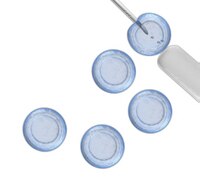A critical appraisal of factors affecting the accuracy of results obtained when using flow cytometry in stem cell investigations: where do you put your gates?
Hughes O. R. et al.
Cytometry A
75(9)
803-810
2009
Mostrar Resumo
Flow cytometry is used extensively in stem cell investigations but there is wide variation in the methods used for data analysis between laboratories. Data analysis can be challenging in stem cell biology as there is often no clear distinction between positive and negative populations. We have undertaken a critical appraisal of factors that affect the accuracy of results in stem cell applications. We used mouse embryonic stem cells and determined the expression of three common antigens in stem cell investigations, namely CD15, CD184, and c-kit. We have compared different cell preparation methods and gating strategies and also evaluated the use of isotype controls and unstained cells as controls for the identification of positive populations. The use of a "doublet discriminator" using a side scatter area signal versus side scatter height signal dot plot to identify single cells for analysis increases the accuracy of results regardless of the method used to dissociate cells. Isotype controls can be helpful in mimicking cellular nonspecific binding of the experimental antibody reaction. Isotype controls behave differently on stem cells at different stages of differentiation. Analysis of a viable single cell population with careful selection of control cell populations increases the accuracy of results. | 19562683
 |








